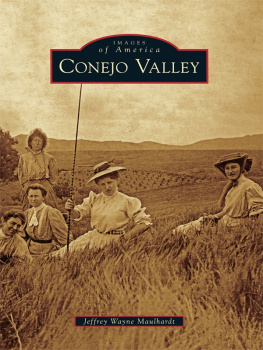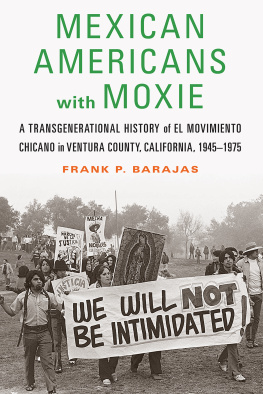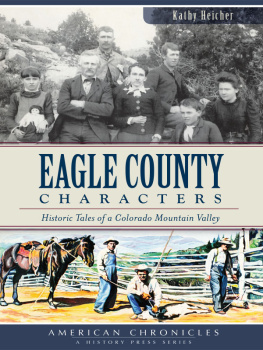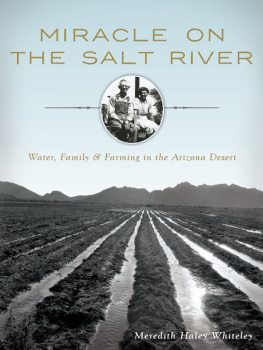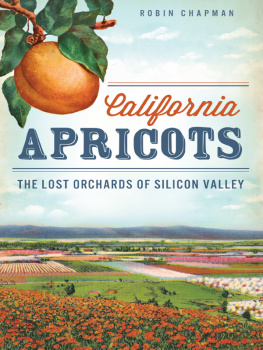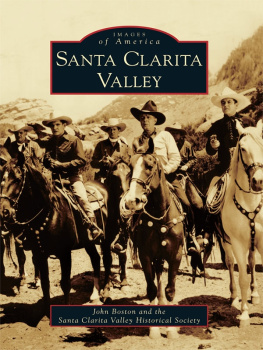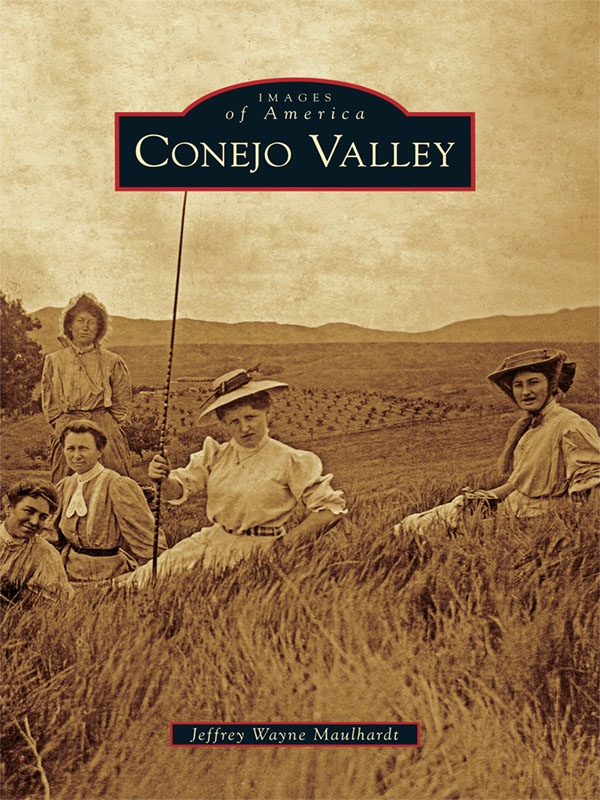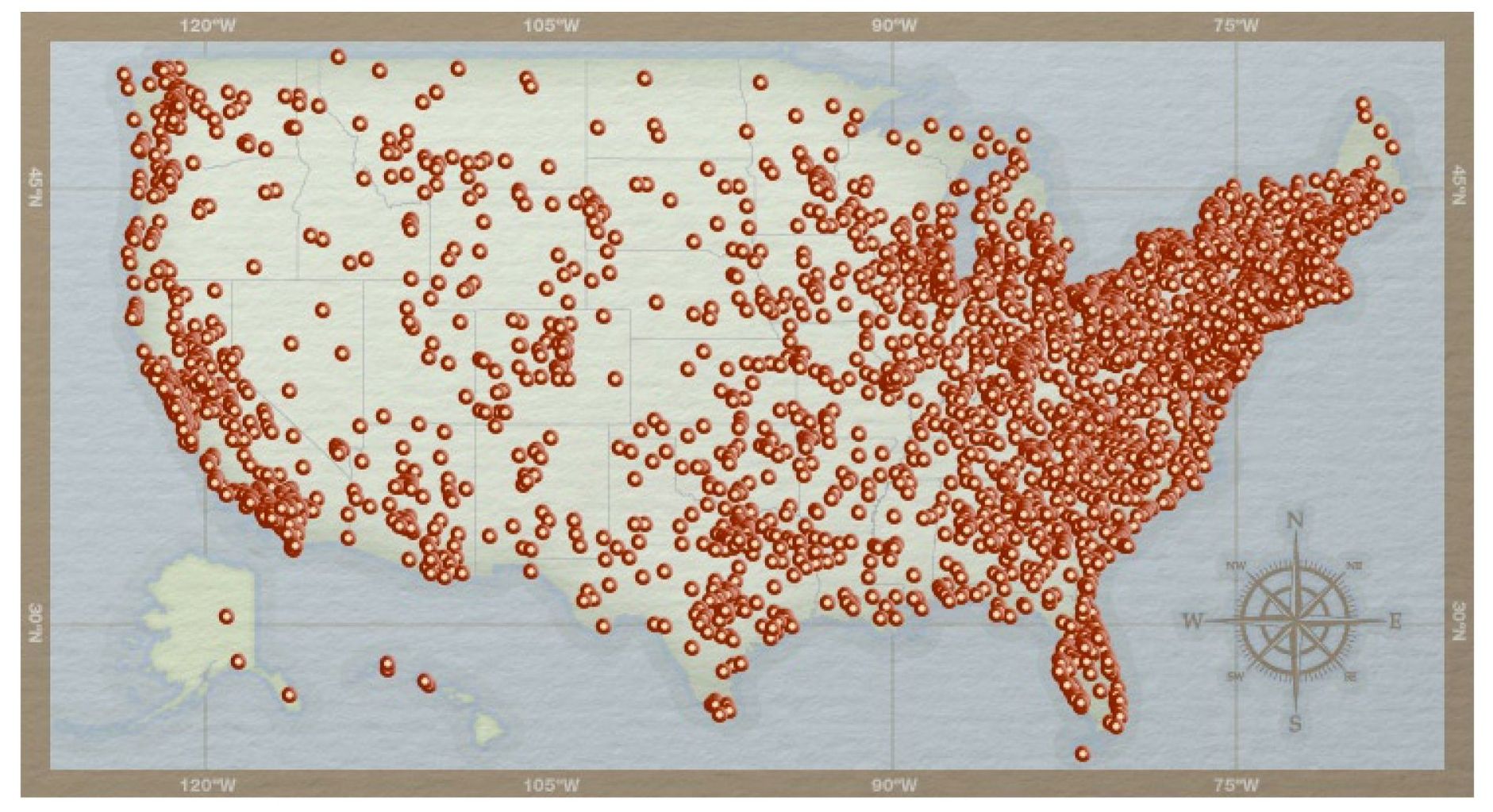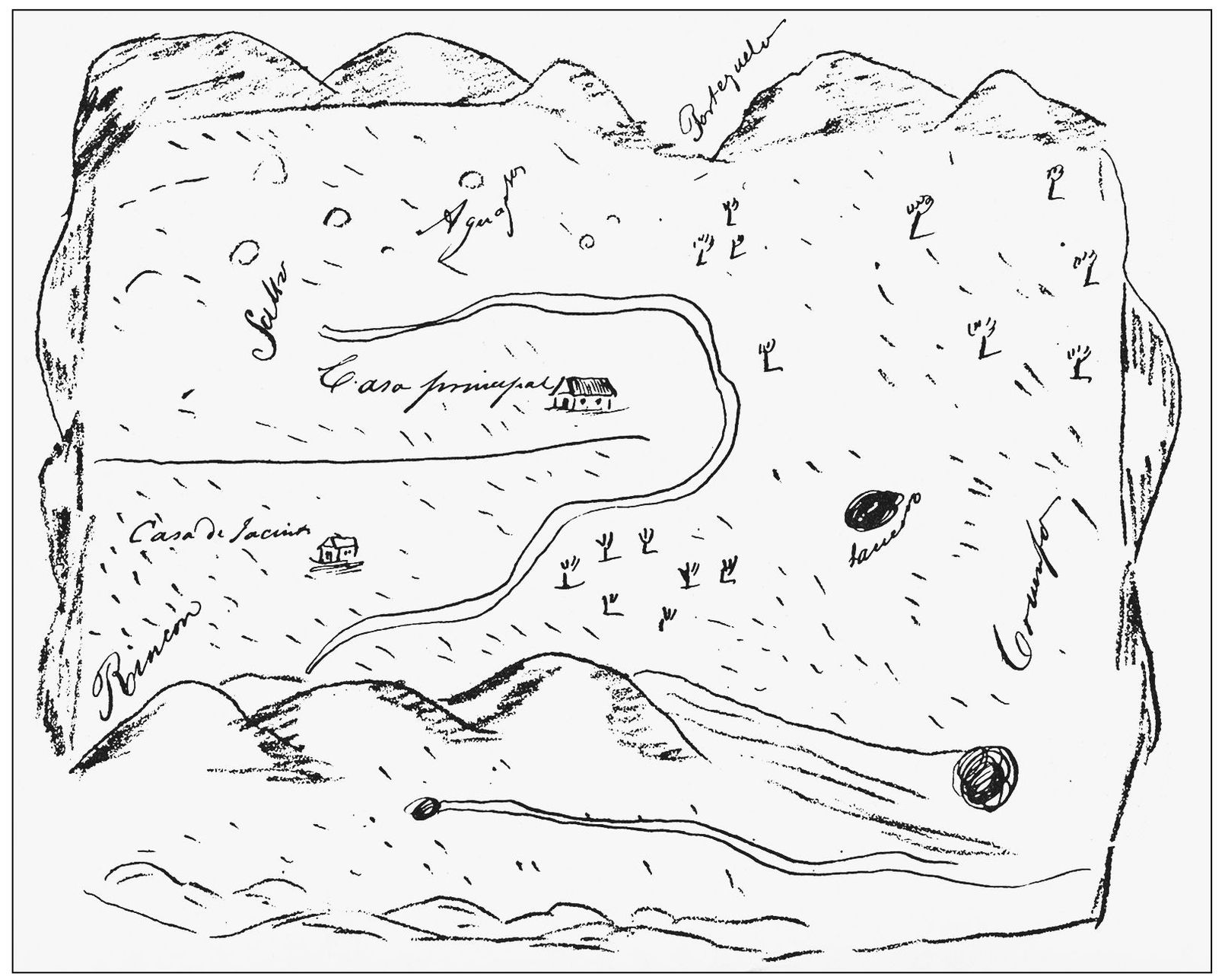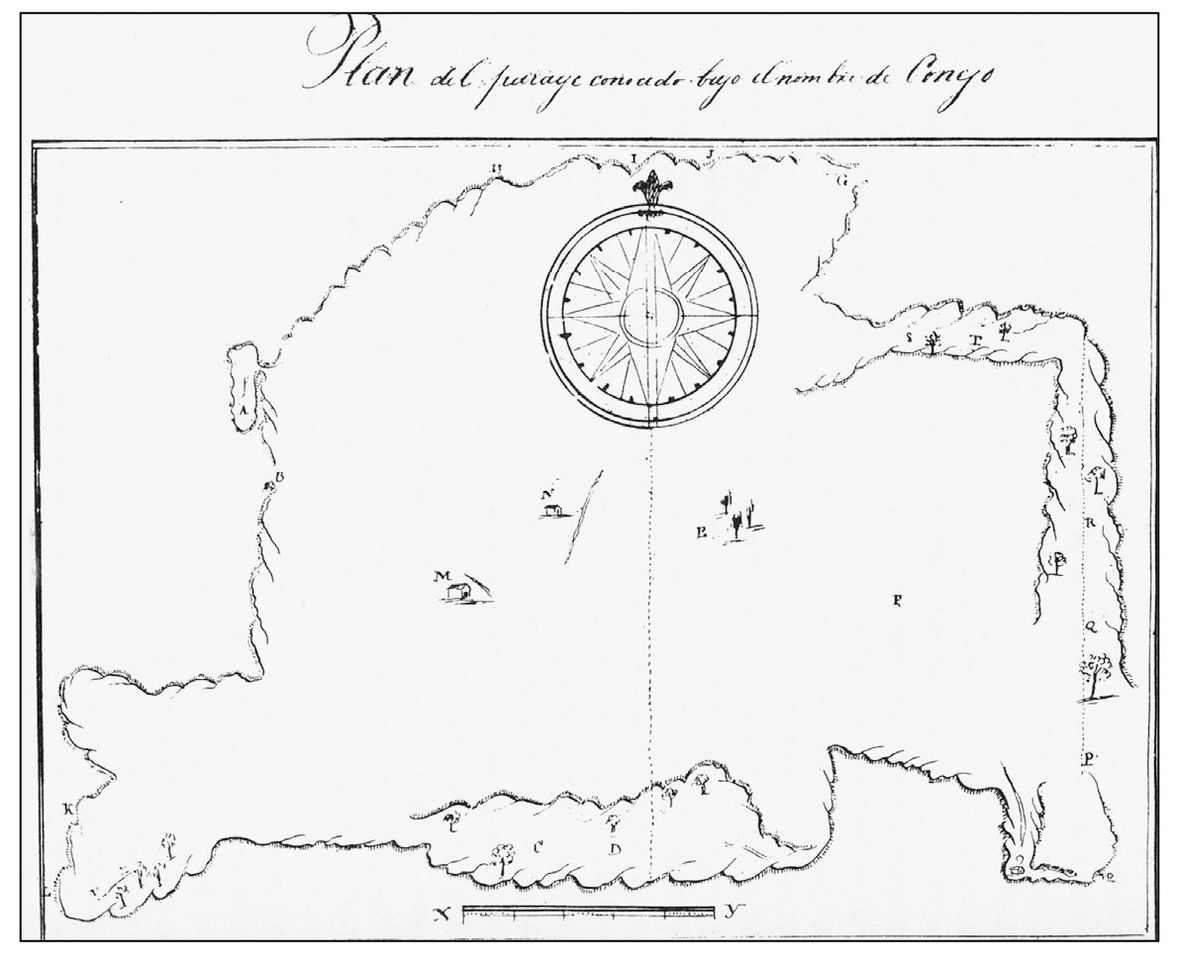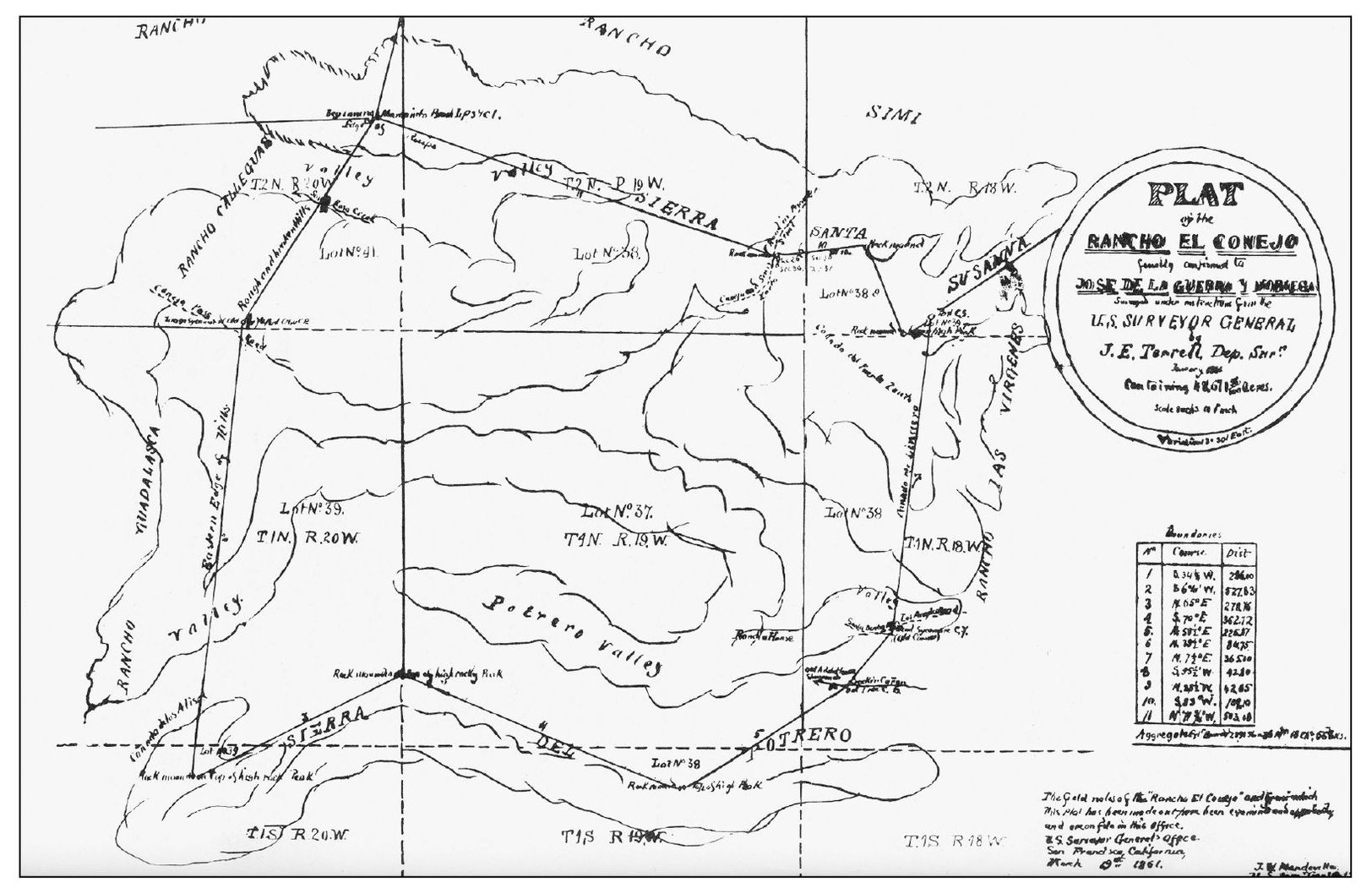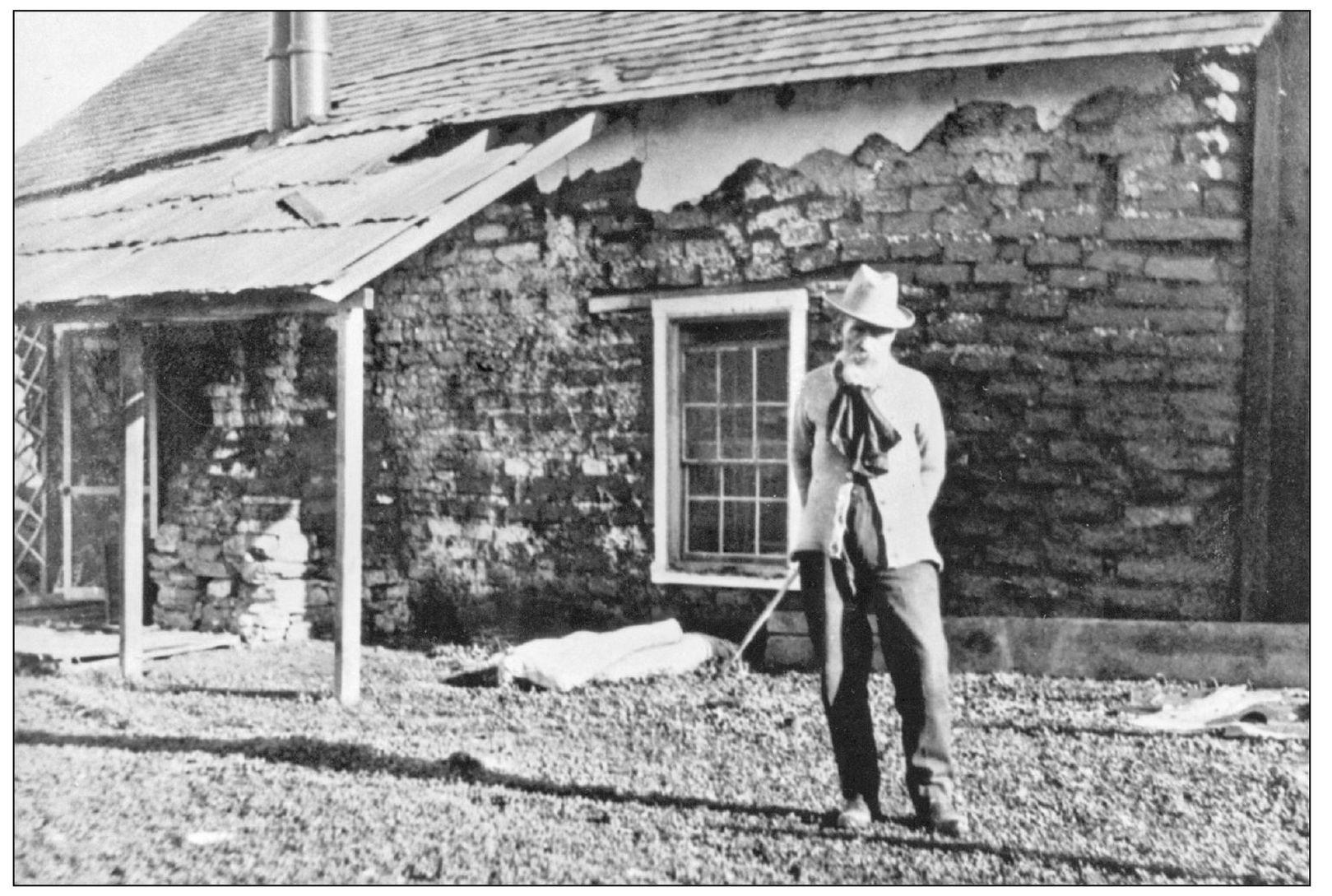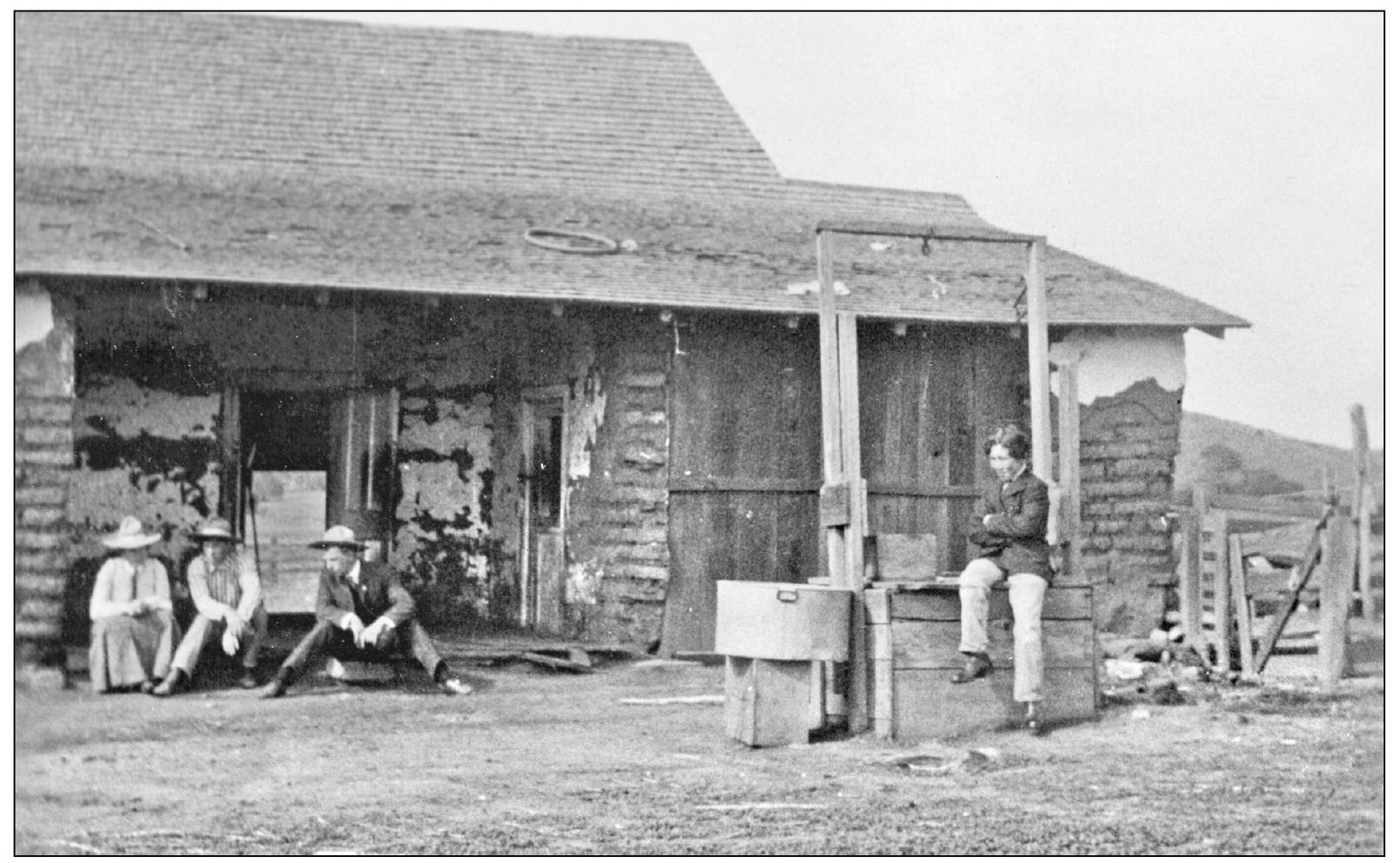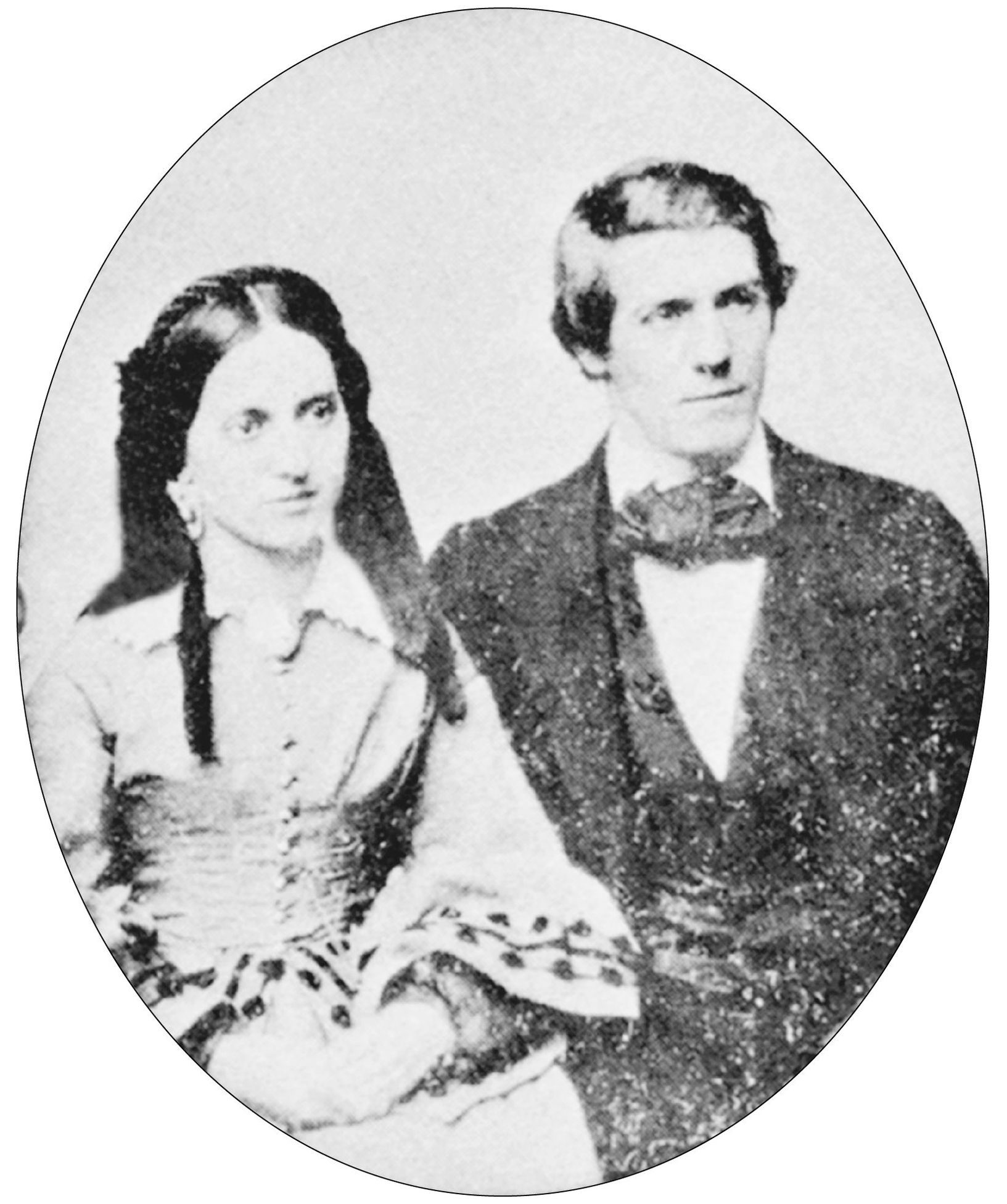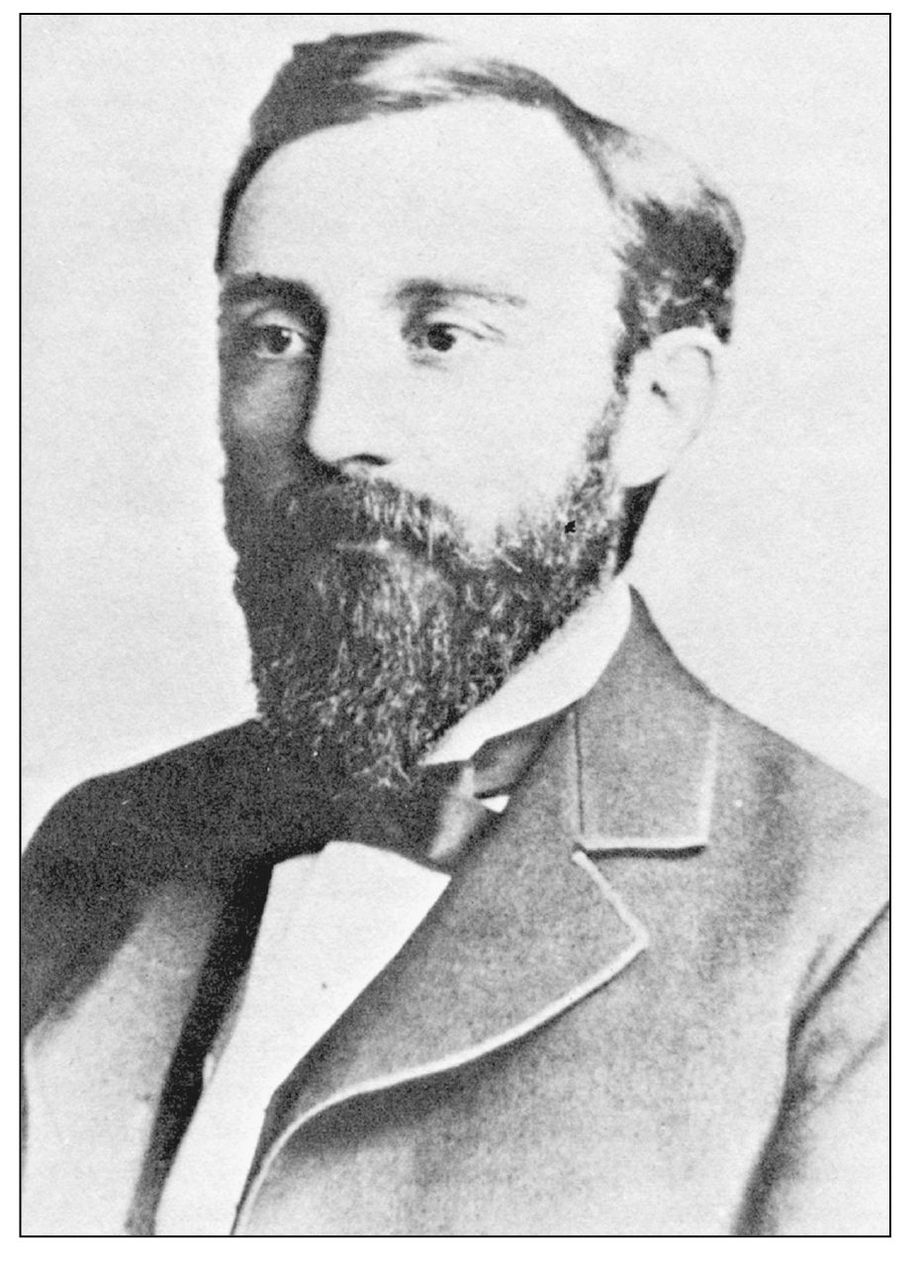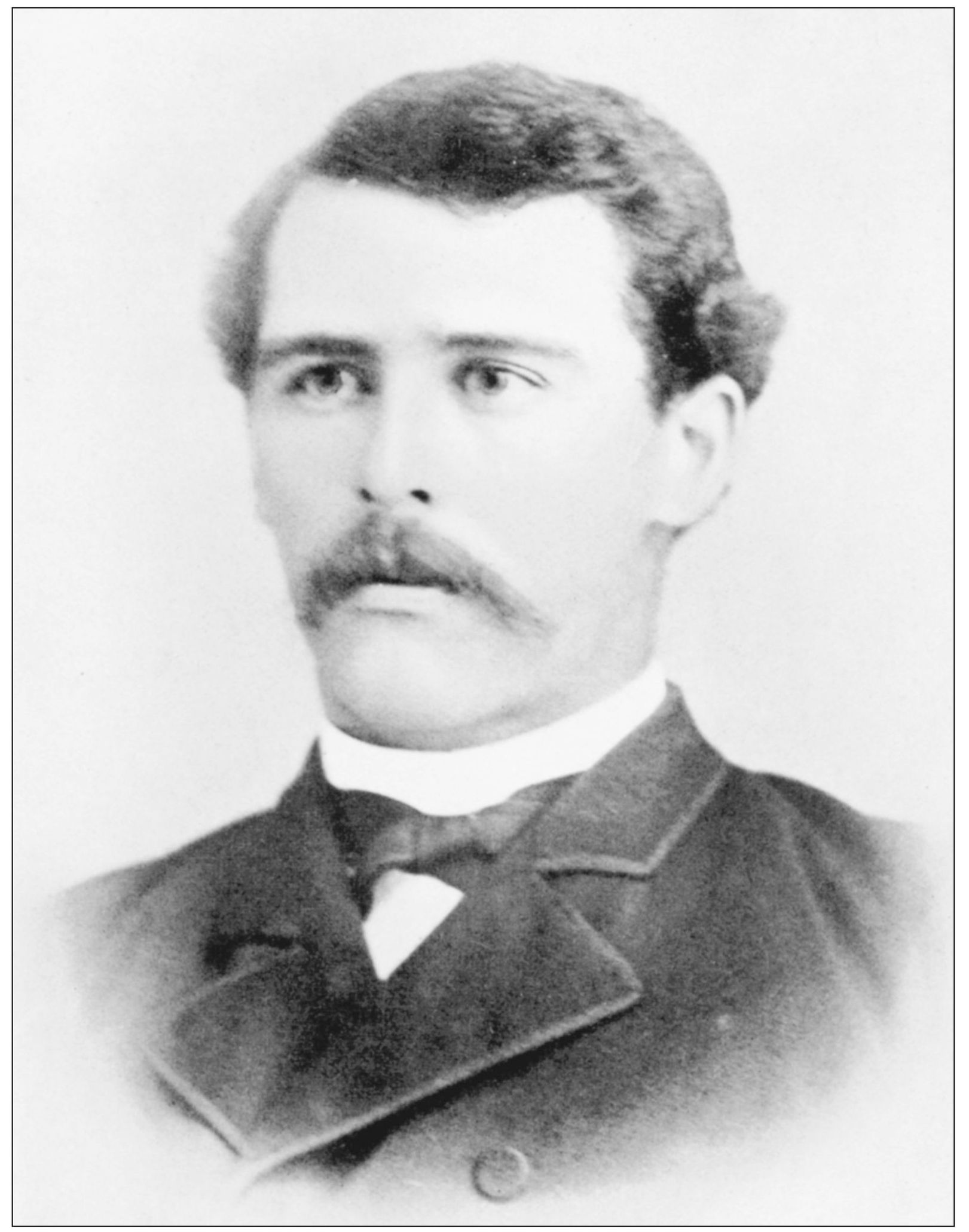ACKNOWLEDGMENTS
I want to thank three organizations whose help and cooperation helped make this book possible. A big thanks goes to the Stagecoach Inn Museum and Conejo Valley Historical Society for allowing me to scan from their photograph archives. Specifically, I want to thank Sandy Hildebrandt and Miriam Sprankling.
Also, I am deeply indebted to the Thousand Oaks Library Special Collections Department, expressly to Jeanette Berard for her direction, knowledge, patience, and punctual responses. Jeanette recognized my time constraints and helped me to plug those last-minute gaps.
Another big thanks is deserved by Big Al Alison Maulhardt for running those errands that time did not permit.
Finally, I am beholden to Carol A. Bidwell and the late Pat Allen, who wrote the major sources for the body of this volume. The Conejo Valley-Old and New Frontiers by Carol A. Bidwell and Pat Allens work on the Ventura County Historical Society Quarterly , Conejo Valley: Bicentennial-Centennial, from the spring of 1976 edition, were invaluable as starting points and constant references.
Other sources used were Joseph Russells Cattle on the Conejo and Heads and Tails... Odds and Ends ; Patricia Russell Millers Tales of the Triunfo ; Miriam Spranklings Discovering the Story of Conejo Valley ; my own volumes, The First Farmers of the Oxnard Plain and Beans, Beets & Babies ; and various county biographies by Yda Adds Stork, J. M. Guinn, Gidney, Brooks, and Sheridan.
The photographs selected for this book were not based on my family, even though many of them came from family members. Rather, the photograph selections were based on elucidating the themes and stories told. In every case, I tried to find fresh photographs, ones that were new to the Conejo publication canon. However, those duplicated from other publications were chosen to keep a balance or because there were no other choices. I hope you enjoy this marvelous history.
Unless otherwise noted, all images are courtesy of the authors collection.
Find more books like this at
www.imagesofamerica.com
Search for your hometown history, your old
stomping grounds, and even your favorite sports team.
One
PIONEERS
This image shows the dese o , or land grant map, of the area known as Salto de Conejo for Maria del Carmen Lorenzana. Lorenzana was the sister of Jose de Jesus Rodriquez and daughter of original Spanish land grantee Jose Ignacio Rodriquez. Lorenzana moved onto the Conejo property in 1833 with her husband, Jacinto Lorenzana, and two children. They lived in an adobe in the area known as El Rincon. It has been speculated that the adobe was located on what became the Janss Ranch near the shopping center.
In 1822, soon after Mexicos reign of California began, Jose de La Guerra, who principally lived in Santa Barbara, petitioned for a re-grant of half of El Conejo Rancho. He claimed that original grantee Jose Polanco had abandoned his claim. De La Guerra was granted the El Triunfo portion, todays Westlake and North Ranch areas.
After decades of legal battles between the heirs of the Rodriquez and de La Guerra families, the U.S. Surveyor Generals office completed an official map of Rancho El Conejo. The total acreage of the grant was 48,671.56 acres.
Andrew Russell poses in front of the remnants of the de La Guerra adobe that was located on his ranch. Russell and his brother Hannibal Russell purchased 5,960 acres from Howard Mills in October 1881 for $15,000. (Courtesy Thousand Oaks Library, accession number LHP00393.)
The Russell family originally used the adobe for their residence and later used it as a milk house. The de La Guerra adobe was ripe with rumors of hidden treasure buried under the house. Eventually gold seekers undermined the foundation of the structure by digging for gold and leaving the link to the Californio past to topple. (Courtesy Stagecoach Inn and Conejo Valley Historical Society.)
Howard K. Mills and his wife, Carolyn Freeman, along with their three children, came to California in 1870. Mills came to California upon advice from his doctor to move to an area with a warmer climate than the harsh winters he endured in Minnesota. In August 1871, Mills and partner John Edwards, both from Santa Barbara, purchased 23,835.75 acres for $55,000, at approximately $2.30 an acre, from the heirs of the de La Guerra family. Mills and Edwards purchased 4,500 head of sheep but would lose most of their investment to the drought of 18761877.
John Edwards married Elizabeth Sexton, and they had four children, all born in Ione, California. The Edwards, Sexton, Foster, and Hill families all participated in the gold rush in 1849 and later moved to the Goleta area. Edwards built a home in Conejo but lived in Santa Barbara, where he ran a hardware store and became a prominent banker.
Egbert S. Newbury (18431880) purchased 2,200 acres in 1874 from his partners Mills and Edwards. His property was near old town Thousand Oaks and stretched toward Hidden Valley. Newbury was the areas first postmaster, starting in July 1875, and also served as the areas news correspondent to the Ventura paper. However, the drought of 18761877 put a financial strain on the family, and they moved to Michigan, where Egberts sister lived with her husband, Gov. John Judson Bagley. Egberts short life ended here in February 1880. (Courtesy Stagecoach Inn and Conejo Valley Historical Society.)
Joseph Howard Jr. was born in Orange, New Jersey, in 1866. He came to California in 1880 with his parents and lived in Santa Barbara. For a short time, he worked at his fathers Conejo ranch, where he learned how to raise cattle, a skill he expanded upon and extended to other areas of the county and later in Arizona. Howard married Sarah Middleton, the daughter of Elizabeth Middleton, who was married to Samuel Hill.

